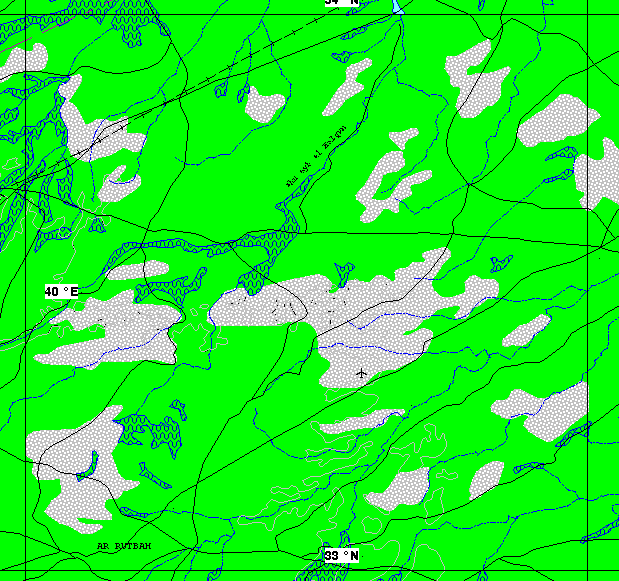





The Akashat Mine, located 420 km West of Baghdad, is a Uranium ore production facility associated with the Al Qaim site. Iraq has reserves of uranium ore which continue to be mined at Akashat, on the border with Syria. The Al Qaim facility, 100 km to the north east, remains capable of ore refinement. By the mid-1980s Iraq had at least 164 tons of yellowcake, obtained at the Akashat mine and processed in Iraq at Al Qaim, a plant built by a Swiss company.
Construction of the Baghdad-Al Qaim-Akashat railway involved the earthing over compressive soils with length of 50 km; design of experimental earthing with monitoring and results analysis, foundation reinforcement for railways and highways bridges along the railway with compressive soils; relocation of the Habbaniyah lake dam for the railway construction; and studies and monitoring of the structure of the existing bridges.
As of May 1984 some press reports indicated that the US government had identified at least three and possibly five chemical-agent production sites in Iraq. The locations specified in the press were Samawa, Ramadi, Samarra and Akashat. Iraq was believed to have been manufacturing mustard gas at a production facility in Samara since the early 1980s. It also began an extensive program to produce nerve agent precursor chemicals, taking advantage of its own natural resources. Phosphate mines/industries are at Akashat, Al Qaim, and Rutbah. Some reports claimed that Iraq constructed its first chemical warfare plant near the northwestern town of Akashat in 1979. However, Akashat had been toured by foreign correspondents in the early 1980s, including a British journalist who reported finding only contra-indicative evidence of a nerve gas plant being there.
Badush, Baiji, Al Qaim, Samarra, Akashat, Al Fallujah, Baghdad, Salman Pak, Musayyib, and Basra were identified as chemical and biological warfare related locations by USCENTCOM as of September 1990. [GulfLINK] Some sources suggest that the al-Muthanna chemical weapons plants received their nitrogen phosphates from the Akashat mine, sulfur from the al-Meshrake mines north of Mosul, and certain other key chemicals from the main fertilizer factory at Basra. [GulfLINK]

